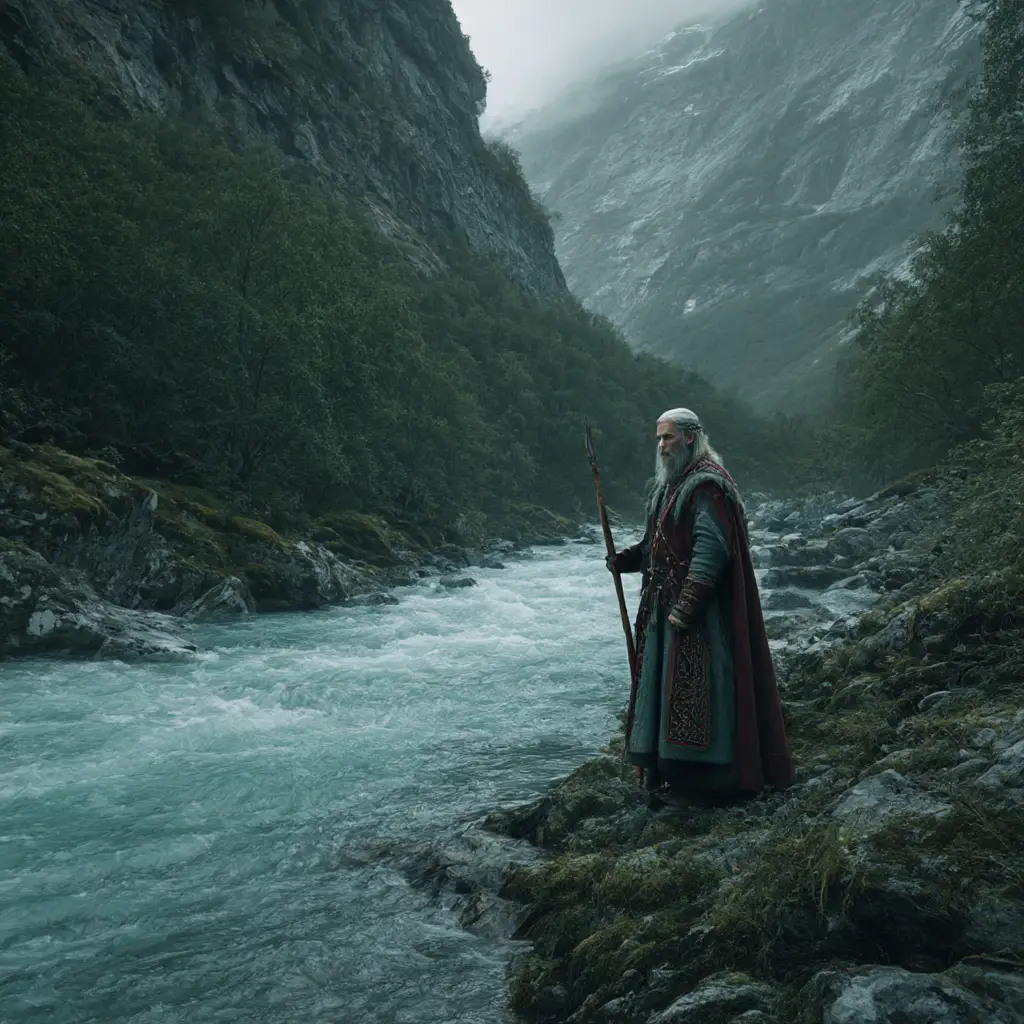The River Ifing in Norse Mythology
Overview
The River Ifing (Old Norse: Ífingr) is one of the lesser-known but fascinating features of Norse mythology. It is described as a mighty river that forms the boundary between Asgard, the realm of the gods, and Jotunheim, the land of the giants. The Ifing represents more than just a geographical divide – it symbolises the eternal tension between the forces of order and chaos that shape the Norse cosmos.
Origins and Sources
The main reference to the River Ifing appears in the Poetic Edda, specifically in the poem Vafþrúðnismál. In this poem, Odin engages in a battle of wisdom with the giant Vafthrudnir. During their exchange, the giant explains that the Ifing runs forever between the lands of gods and giants, and that its waters never freeze. This single passage gives the river its legendary status within Norse cosmology.
The River That Never Freezes
A key feature of the Ifing is that it never ices over, even during the harshest northern winters. In a world deeply familiar with cold and frost, this quality marks the river as supernatural. The constant, unfrozen flow symbolises eternity, separation, and resilience. It also serves as a natural defence — a divine border that prevents easy passage between Asgard and Jotunheim.
Symbolism and Meaning
In mythological terms, the River Ifing represents the balance and conflict that define the Norse universe. The gods and giants exist in a perpetual state of opposition, and the Ifing ensures that their worlds remain apart. The river’s ceaseless motion reflects the unending struggle between order and chaos, light and darkness, creation and destruction.
Some interpretations suggest that the name “Ifing” may relate to the Old Norse word for “doubt” or “uncertainty”. This connection highlights the river’s symbolic role as a boundary of the unknown — a place that neither side can cross without risk or consequence.
The Role of Ifing in Norse Cosmology
Within the Norse world view, the cosmos is divided into several realms connected by Yggdrasil, the great world tree. Just as Yggdrasil unites the Nine Worlds, the Ifing defines one of their divisions. By standing as a constant, unyielding border, it reinforces the structure and balance of existence. Without such boundaries, the universe would collapse into chaos.
Modern Interpretations
Today, the River Ifing is often discussed by scholars and enthusiasts of Norse mythology as a poetic image of natural and moral boundaries. It reflects the Norse understanding that some divisions are necessary to preserve harmony. In literature and popular culture, the Ifing continues to appear as a symbol of separation, endurance, and the powerful flow of nature that even gods must respect.
Summary
The River Ifing may not be as well-known as Yggdrasil or the Bifrost bridge, but it holds a vital place in the Norse mythological landscape. As the ever-flowing border between gods and giants, it represents the delicate balance of the world.



